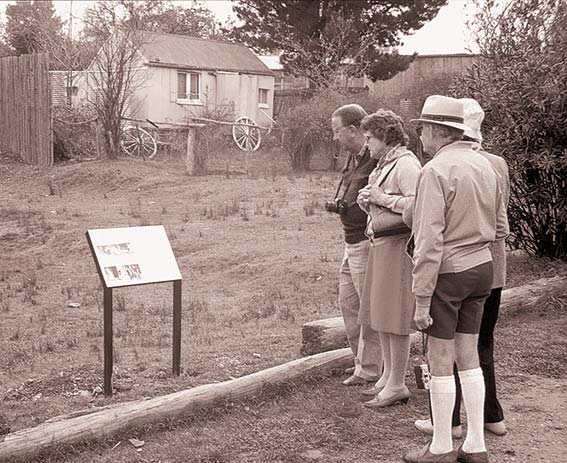Interpretive content ...
From the perspective of the user experience, the delivery of interpretive, value add content is the culmination of the orientation and trip preparation process that has gone before.
Having finally connected with their on site experience of the heritage setting and in the midst of being actively engaged with their experience, interpretive material invites people to understand more about their surroundings so as to encourage them in attaching positive meanings and values to this experience.
In this context the success of the interpretive intervention is dependent upon two components.
One is the clearly the nature of the interpretive material on offer and the success with which it conveys its messaging. The other is the state that the visitor may be in whilst actively engaging with this content.
The interpretive context ...
Are they relaxed and comfortable in relation to where they are and where they are going? Are they happy that the experience is unfolding in a manner that they expected or are they frustrated that conditions are not as they would have wished? Have they been invited to step aside from their journey such in a node environment such that they are slightly "aside" from the main path where they can take in the content on offer without impeding passing traffic.
Additionally have they being invited to step aside from the "corridor" mentality that must inevitably attach to a progressing along a pathway to consider themselves in a place of repose?
Does the landscape setting invite those who may first need to get a feeling for a place before processing information about it allow for non verbal communication pathways between the product and the user or is the interpretive intervention purely aligned with right side of the brain rational elaboration via reliance on signage installed with no consideration of the landscape context within which people will engage with it.
If these preconditions for the delivery of successful interpretive interventions are in place, then the chances of interpretation serving as a genuine value add to the user experience are much enhanced.
Moving beyond traditional intepretive forms...

The underlying model in play at Hill End Historic Site when this photo was taken in the late 1980s continues to underpin many heritage interpretation platforms today.
In this context, the visitor is the passive recipient of pre-packaged message content prepared on their behalf by the interpretive team. They have no capacity to interact with or enquire of the medium such as to follow their own lines of enquiry. Nor can they choose to read the message in their preferred language.
Limitations such as these place many conventional interpretive media settings at odds with user expectations in a post-2020 operating environment.
Mobile digital technology has changed the fundamental expectations people bring with them in relation to accessing information in a given setting.
This does not mean that every interpretive response needs a digital component. It does however mean that in a post 2020 operating environment all interpretive communications are being undertaken in a digital age.
Ignoring the challenges this presents for the traditional interpretive platform delivery models risks increasingly isolating out interpretive interventions as expensive irrelevancies for the modern user.



